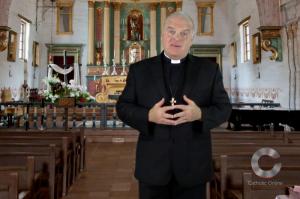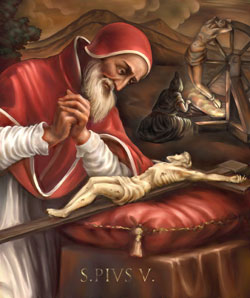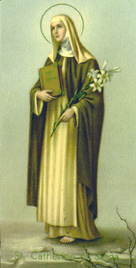We ask you, urgently: don't scroll past this
Dear readers, Catholic Online was de-platformed by Shopify for our pro-life beliefs. They shut down our Catholic Online, Catholic Online School, Prayer Candles, and Catholic Online Learning Resources essential faith tools serving over 1.4 million students and millions of families worldwide. Our founders, now in their 70's, just gave their entire life savings to protect this mission. But fewer than 2% of readers donate. If everyone gave just $5, the cost of a coffee, we could rebuild stronger and keep Catholic education free for all. Stand with us in faith. Thank you.Help Now >
How the heck do you make a black hole dimmer?
FREE Catholic Classes
Some of the fastest winds in the universe may have been detected at the heart of a distant galaxy. Winds, whipped up by a supermassive black hole may blow at 3,000 miles per second.
Highlights
Catholic Online (https://www.catholic.org)
6/23/2014 (1 decade ago)
Published in Technology
Keywords: Black hole, dimmer, observation, winds, NGC 5548
LOS ANGELES, CA (Catholic Online) - The universe is full of extremes, at least when compared to phenomena we are familiar with on Earth. Winds on Earth can reach a couple hundred mile per hour inside the vortex of a violent tornado, but most of us are accustomed to breezes only a few miles per hour. However, in space, winds can blow much faster.
Scientists have long predicted that winds in space, whipped up by black holes and their gravitational impact on nearby dust and gasses would be fairly strong, but the winds observed around galaxy NGC 5548, are at least five times faster than ever thought.
St. Dominic, patron saint of astronomers.
Blowing at over 3,000 miles per second, winds blowing around a supermassive black hole in the center of the galaxy are doing something unusually strange-they are dimming the black hole from observation.
Generally speaking, when something moves fast and interacts with other objects, it builds temperature and puts our more radiation. Indeed, around every black hole is an accretion disk, a disk of dust and gas that rings the equator of a black hole as it spirals into oblivion. Not all of the dust and gas falls in however, some of it is shot away from the poles of the black hole at velocities close to the speed of light.
As an accretion disk forms, the gasses become compressed and spin faster and faster, emitting increasingly powerful radiation, in the form of X-rays. We can detect these X-rays which allows us to pinpoint the location of a black hole.
However, these super-fast winds generated by the black hole can, at least in this one instance, obscure the X-rays coming from the center of NGC 5548, effectively dimming it from observation. Researchers might conclude that a black hole, so obscured by its own winds, may be less powerful than it really is.
Winds whip up strands of dust which absorb X-ray radiation, making it dimmer to observation.
In the case of NGC 5548, the black hole is 90 percent dimmer to X-ray observation than it should be.
If the observations are correct, they could provide scientists with valuable clues as to how the supermassive black holes, thought to be at the center of every galaxy, interact with the region of space around them. Although these mysterious objects exist, why and how they got there remains unknown. We also know that galaxies do not have enough visible mass in them to hold together. Is there an unseen interaction that explains, at least in part, why galaxies don't simply fly apart?
Probably.
For now, scientists explain the cohesion within galaxies as a function of dark matter, an unseen source of mass that binds the galaxy together. Learning more about black holes may change the way we understand galaxies and the role black holes play in forming them.
---
'Help Give every Student and Teacher FREE resources for a world-class Moral Catholic Education'
Copyright 2021 - Distributed by Catholic Online
Join the Movement
When you sign up below, you don't just join an email list - you're joining an entire movement for Free world class Catholic education.

Novena for Pope Francis | FREE PDF Download
-

- Easter / Lent
- Ascension Day
- 7 Morning Prayers
- Mysteries of the Rosary
- Litany of the Bl. Virgin Mary
- Popular Saints
- Popular Prayers
- Female Saints
- Saint Feast Days by Month
- Stations of the Cross
- St. Francis of Assisi
- St. Michael the Archangel
- The Apostles' Creed
- Unfailing Prayer to St. Anthony
- Pray the Rosary
St. Catherine of Siena: A Fearless Voice for Christ and the Church
Conclave to Open with Most International College of Cardinals in Church History
A Symbol of Faith, Not Fashion: Cross Necklaces Find Renewed Meaning Among Young Catholics and Public Leaders
Daily Catholic
 Daily Readings for Wednesday, April 30, 2025
Daily Readings for Wednesday, April 30, 2025 St. Pius V, Pope: Saint of the Day for Wednesday, April 30, 2025
St. Pius V, Pope: Saint of the Day for Wednesday, April 30, 2025 Prayer to Saint Joseph for Success in Work: Prayer of the Day for Wednesday, April 30, 2025
Prayer to Saint Joseph for Success in Work: Prayer of the Day for Wednesday, April 30, 2025 Daily Readings for Tuesday, April 29, 2025
Daily Readings for Tuesday, April 29, 2025 St. Catherine of Siena: Saint of the Day for Tuesday, April 29, 2025
St. Catherine of Siena: Saint of the Day for Tuesday, April 29, 2025- Prayer for the Dead # 3: Prayer of the Day for Tuesday, April 29, 2025
![]()
Copyright 2025 Catholic Online. All materials contained on this site, whether written, audible or visual are the exclusive property of Catholic Online and are protected under U.S. and International copyright laws, © Copyright 2025 Catholic Online. Any unauthorized use, without prior written consent of Catholic Online is strictly forbidden and prohibited.
Catholic Online is a Project of Your Catholic Voice Foundation, a Not-for-Profit Corporation. Your Catholic Voice Foundation has been granted a recognition of tax exemption under Section 501(c)(3) of the Internal Revenue Code. Federal Tax Identification Number: 81-0596847. Your gift is tax-deductible as allowed by law.


 Daily Readings for Wednesday, April 30, 2025
Daily Readings for Wednesday, April 30, 2025 St. Pius V, Pope: Saint of the Day for Wednesday, April 30, 2025
St. Pius V, Pope: Saint of the Day for Wednesday, April 30, 2025 Prayer to Saint Joseph for Success in Work: Prayer of the Day for Wednesday, April 30, 2025
Prayer to Saint Joseph for Success in Work: Prayer of the Day for Wednesday, April 30, 2025 St. Catherine of Siena: Saint of the Day for Tuesday, April 29, 2025
St. Catherine of Siena: Saint of the Day for Tuesday, April 29, 2025

